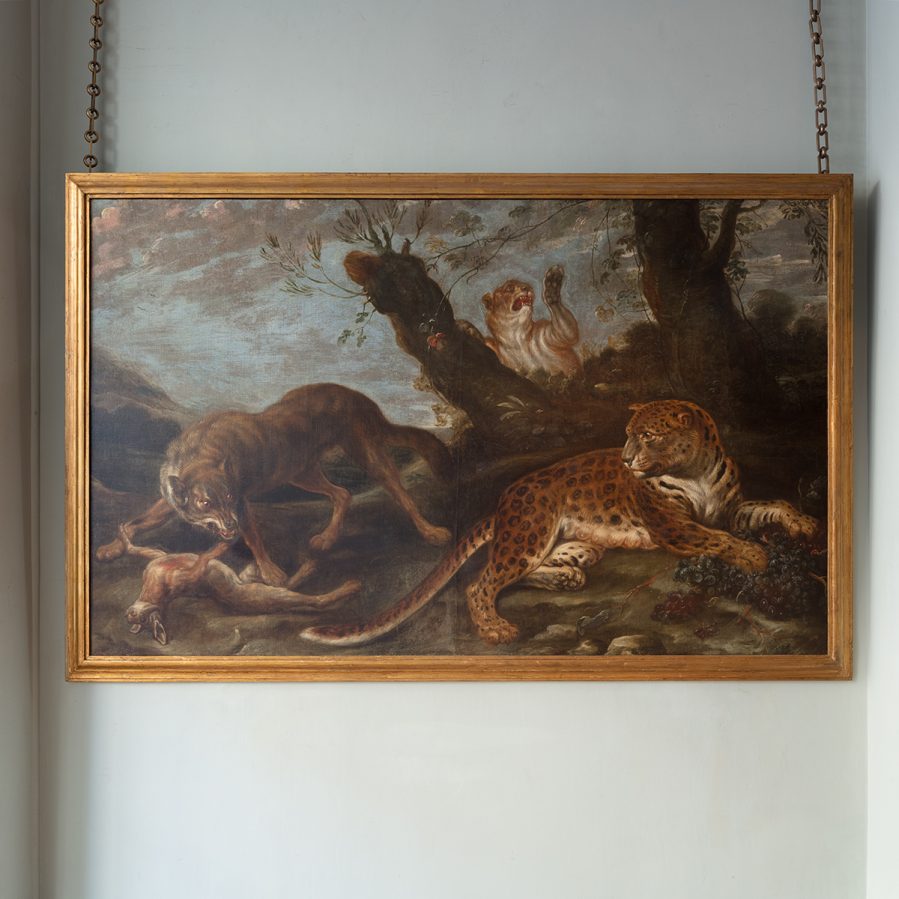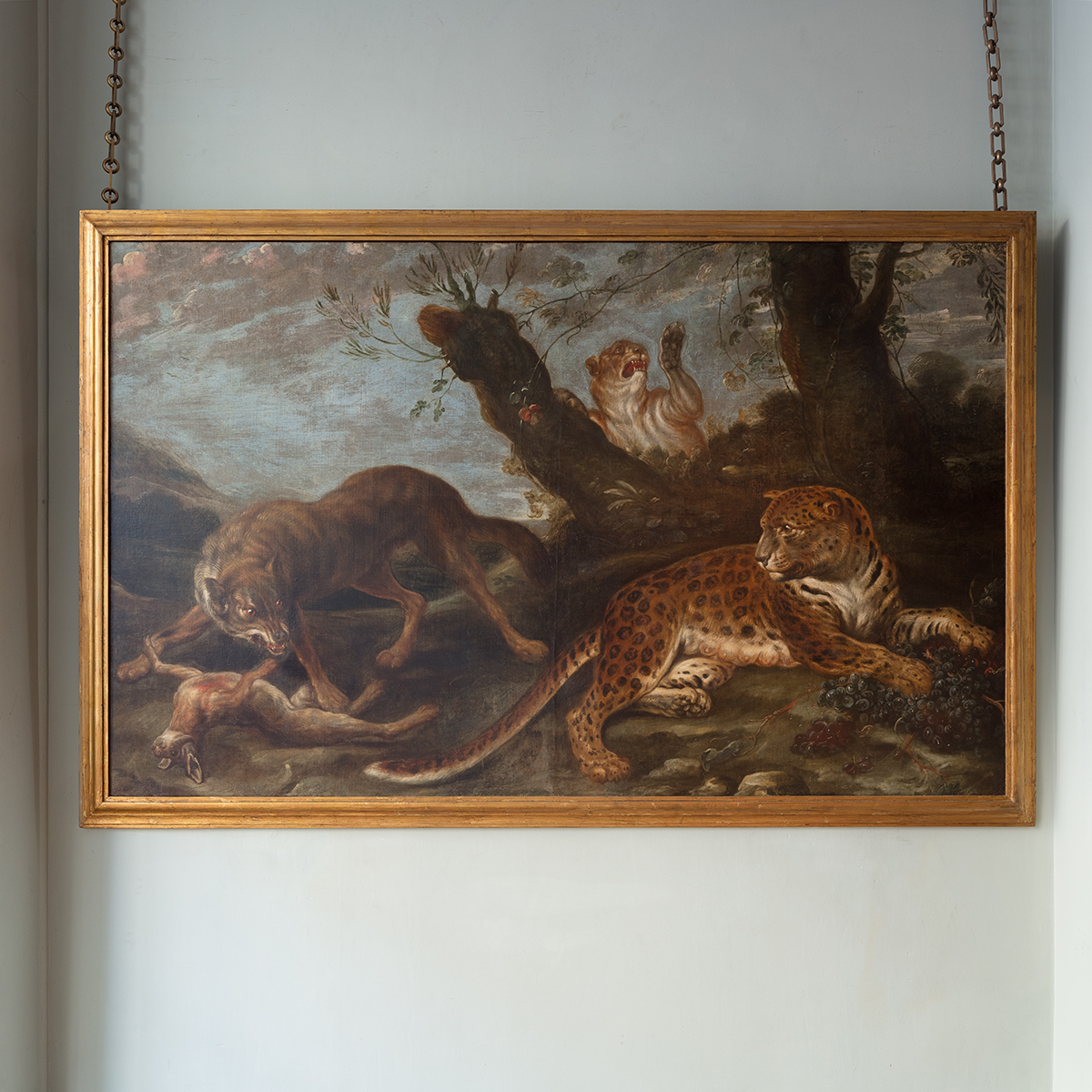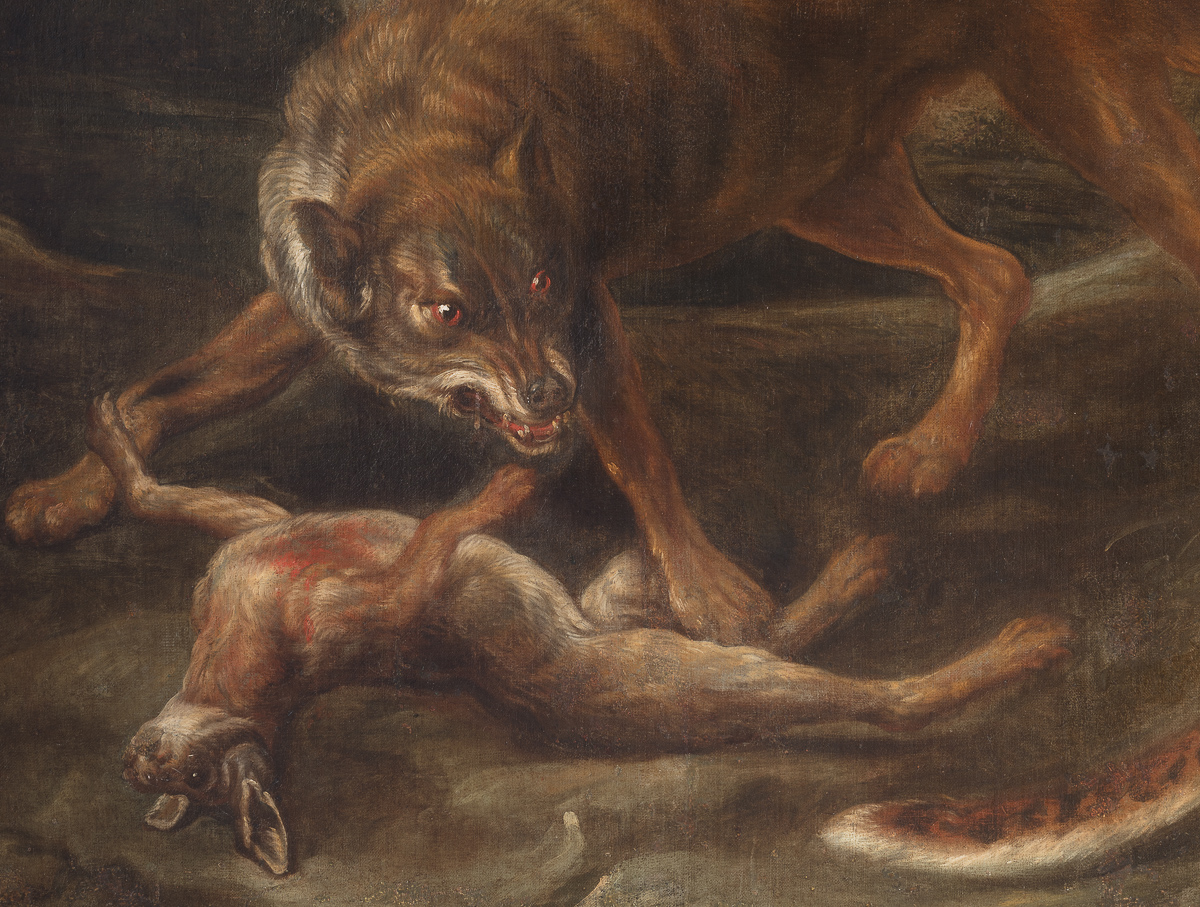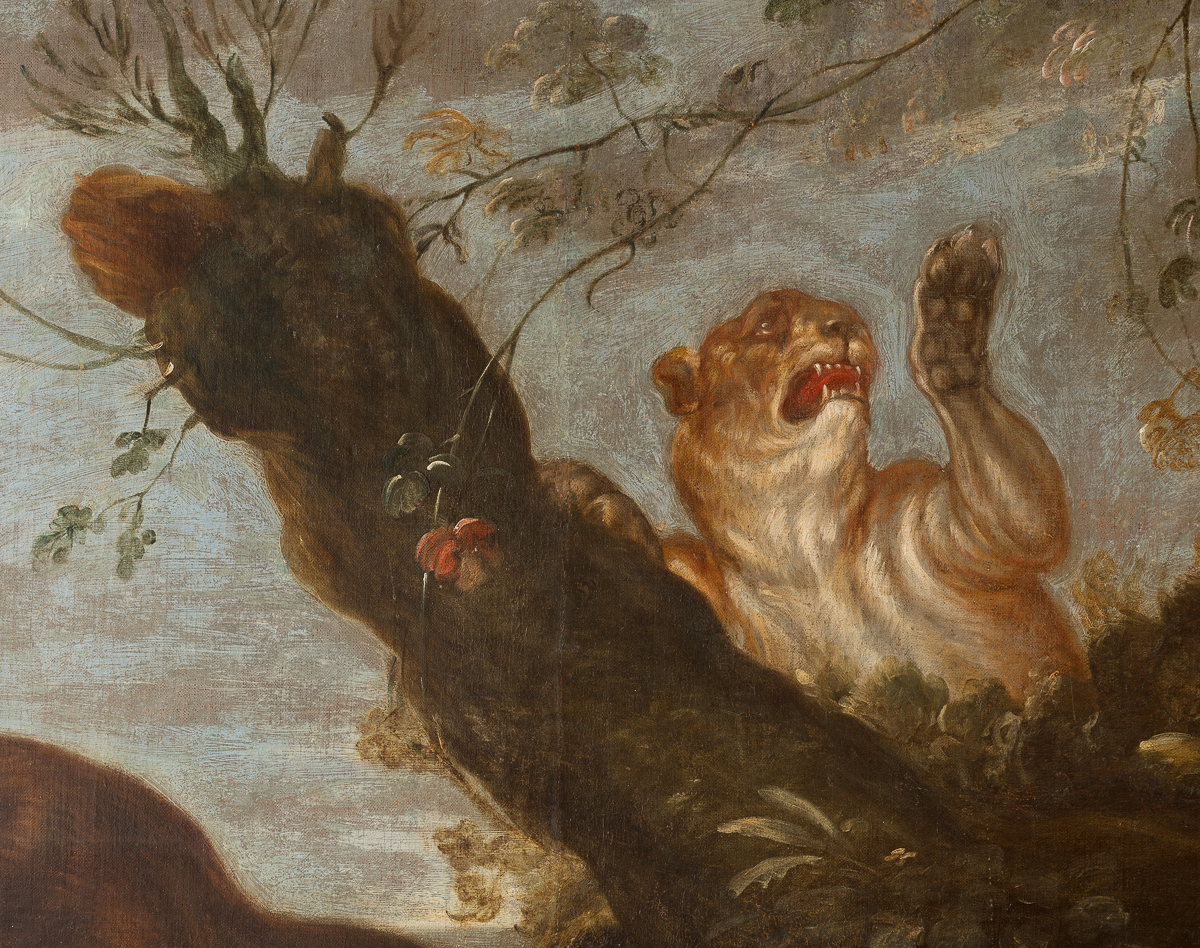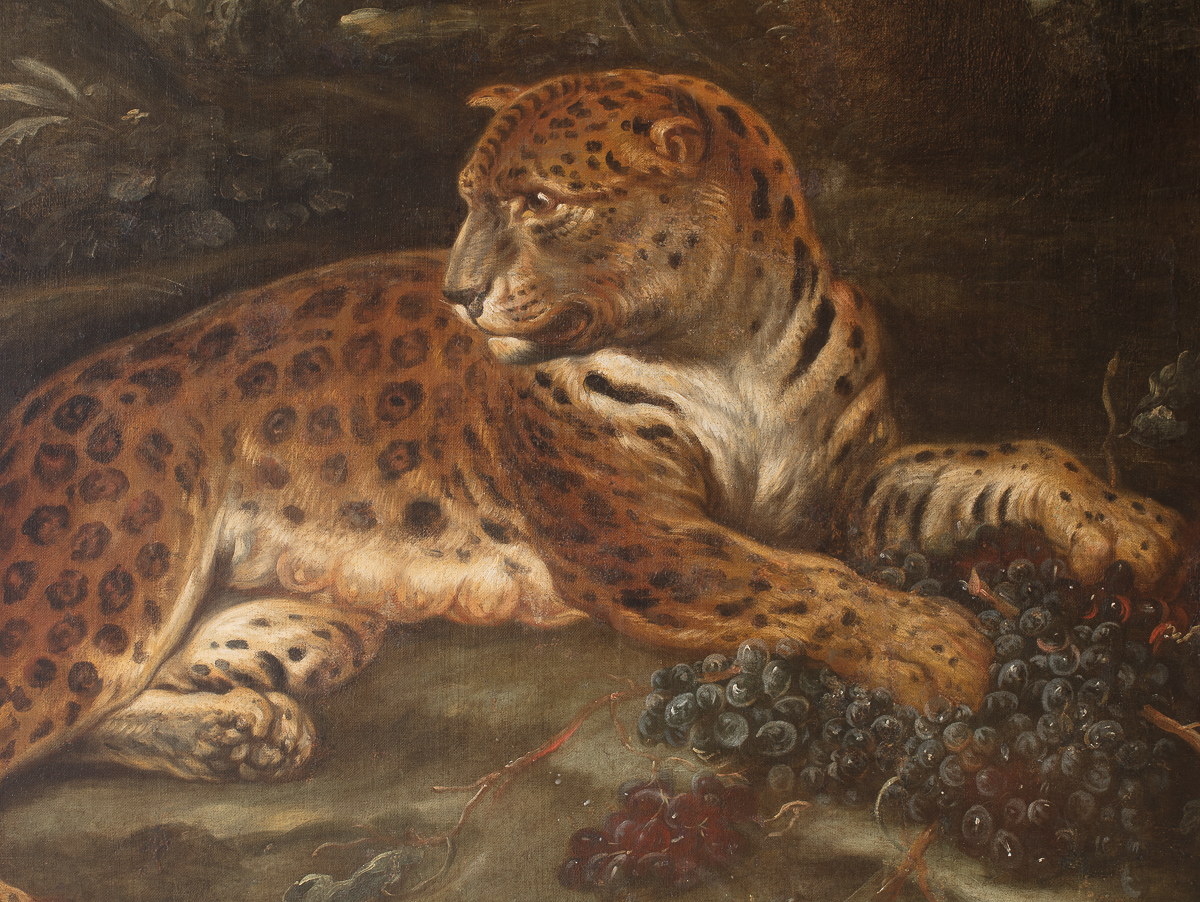Oil on Canvas; A Large Scale Landscape Scene Depicting a Leopardess, Lioness, Wolf & Hare
A mid 17th century large scale oil on canvas depicting a Leopardess, a Lioness and a Wolf toying with a Dead Hare in an Arcadian landscape; in the style of the Dutch Golden Age ‘Animaliers’ and the circle of Frans Snijders.
Large canvases of hunting scenes, often featuring exotic animals such as leopards and lions, were initially popularised by the celebrated painter and diplomat Sir Peter Paul Rubens (1577-1640), and rapidly became a fixture of seventeenth-century patrician residences across Europe. They were heirs to the Renaissance tradition of tapestries representing hunts, which had long been a form of princely decoration, but had typically required much greater expenditures of time and money.
A monumental Wolf and Fox Hunt painted by Rubens in about 1616 – now in New York’s Metropolitan Museum – is considered one of the master’s earliest forays into this genre (fig. 1), alongside a set of four large hunting scenes originally executed for Elector Maximilian of Bavaria (c. 1616), featuring a Hippopotamus and Crocodile Hunt (Alte Pinakothek, Munich); a Wild Boar Hunt (Musée des Beaux-Arts, Marseilles); a Tiger Hunt (Musée des Beaux-Arts, Rennes); and a Lion Hunt destroyed by fire in Bordeaux in 1870. This type of composition – with its energetic treatment of the subject, its references to exotic and powerful beasts and its vibrant atmosphere – immediately appealed to patrons and was enthusiastically embraced by artists both within and outside Rubens’ immediate circle.
Among the former were fellow Flemish painters Frans Snyders (1579-1657) and his brother-in-law Paul de Vos (c. 1591-1678), each of whom collaborated with Rubens on important commissions, while also pursuing the genre of hunting scenes as part of their respective studio practices. Indeed, both are now predominantly remembered for their dynamic representations of hunts, which – differently to Rubens’ – chiefly focus on the animals, without the presence of human figures. This characteristic is shared by the present composition, which highlights the interaction between the beasts themselves, their feral nature and proximity enhancing the scene’s dramatic undercurrent. The wolf on the left, baring its teeth to defend its prey, is carefully observed, including its blood-shot eyes, salivating mouth, and thick fur, which all find parallels in compositions by Rubens and his circle (fig. 2). Similarly, the lioness emerging from behind a tree trunk in the background is a citation from a famous composition by Rubens and Jan Brueghel the Elder, The Garden of Eden with the Fall of Man (c. 1617, The Mauritshuis, The Hague; fig. 3), which in turn reprised Jan Brueghel the Elder’s Entry of the Animals into Noah’s Ark from 1613 (The J. Paul Getty Museum, Los Angeles). Finally, the leopard lying in the grass on the right derives from one of the predators in The Leopards by Snyders, an early work now in the Manchester Art Gallery (fig. 4). The presence of grapes at the animal’s feet has been linked to the fact Snyders often included fruit in his pictures of dead game, but here it may also be connected to the fact leopards were traditionally associated with the god of wine Bacchus, and as such repeatedly appear in painterly representations of his triumph.
To conclude, the present canvas belongs to the tradition of hunting scenes established in the seventeenth century by Rubens and his circle, and closely echoes the focus on animals found in the canvases of Snyders and de Vos. Its technique is also reminiscent of that by the two artists, identified by short and distinctive brushstrokes to describe animal fur and a somewhat more impressionistic handling of vegetation (the latter was sometimes executed by their contemporary and collaborator Jan Wildens, who specialised in landscape painting).
Framed Dimensions;
Height: 159cm, 62 1/2″
Width: 246cm, 8 foot
£75,000


